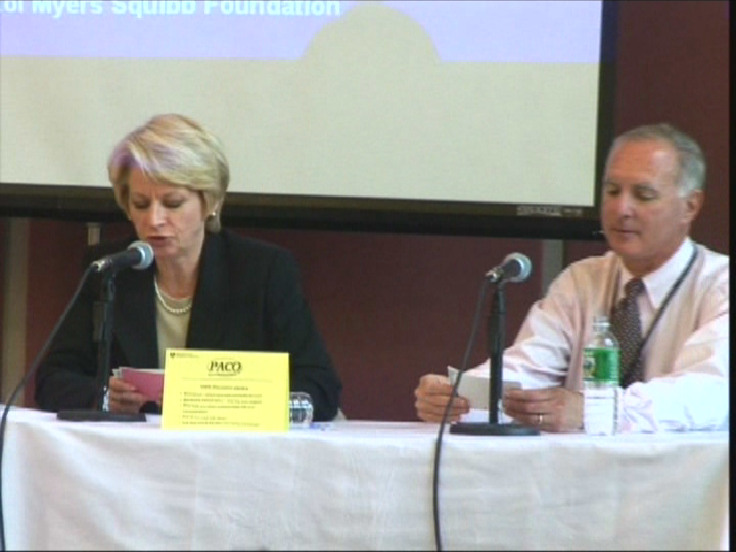PACO Mini-Workshop on June 4, 2007
The Patient-Centered Outcomes Initiative (PACO) hosted a mini-workshop presentation and discussion on the evening of June 4, 2007 for more than 120 rheumatoid arthritis (RA) patients, friends, family members, and members of the BWH community. The featured speakers were BWH rheumatologists Dr. Nancy Shadick, who moderated the evening, and Dr. Michael Weinblatt, who gave the evening’s keynote presentation.
In his talk, Dr. Weinblatt reviewed the past, present, and future of RA therapy, beginning with early research efforts that yielded treatments like gold therapy and sulfasalazine and culminating in discussion of ongoing trials of TNFalpha inhibitors. Current treatment regimens of drugs like methotrexate and biologics, he observed, have been so successful that the need for primary joint replacements at Brigham and Women’s is 50% lower than 10 years ago.
Problems for RA patients remain, and include risks of heart disease and shortened lifespan; cost, availability, and effectiveness of drugs; and lifestyle issues such as pain and fatigue, Dr. Weinblatt said. He concluded with positive expectations for continued discovery in RA therapy: “There’s a lot of promise for rheumatoid arthritis.”
At the evening’s end, participants had their questions answered by both Dr. Nancy Shadick and Dr. Weinblatt. Following the Q&A session, the participants were invited to stay and converse with others at their tables, and completed a survey where they could indicate topics for future workshops.
To see the survey results, click one of the links below:
Please stay tuned for more events in the PACO Rheumatoid Arthritis Series!
- Read an article about the event in Brigham and Women’s Medical Staff News July 2007.
Cardiovascular Disease and Rheumatoid Arthritis
Research has shown that rheumatoid arthritis (RA) patients have a shorter life expectancy than the general population. This is mostly due to the increased prevalence of cardiovascular disease (CVD) in RA patients. Researchers have yet to determine the exact reason for this high occurrence rate, but we do know that there are several things that you can do to decrease either your risk or severity of CVD. For information go to our article.

